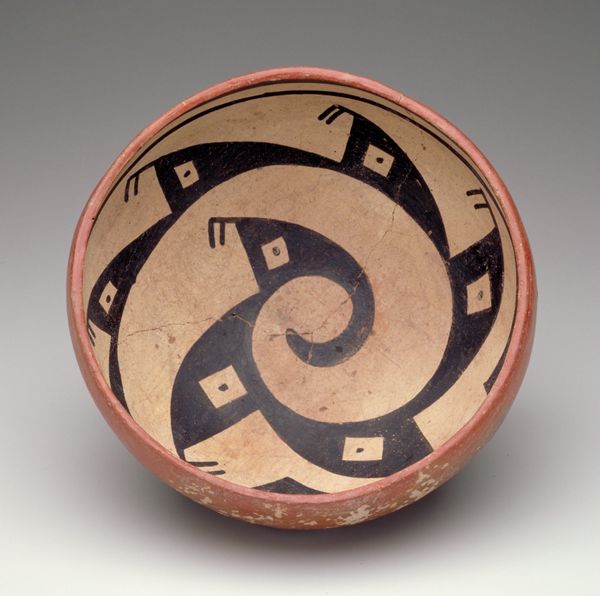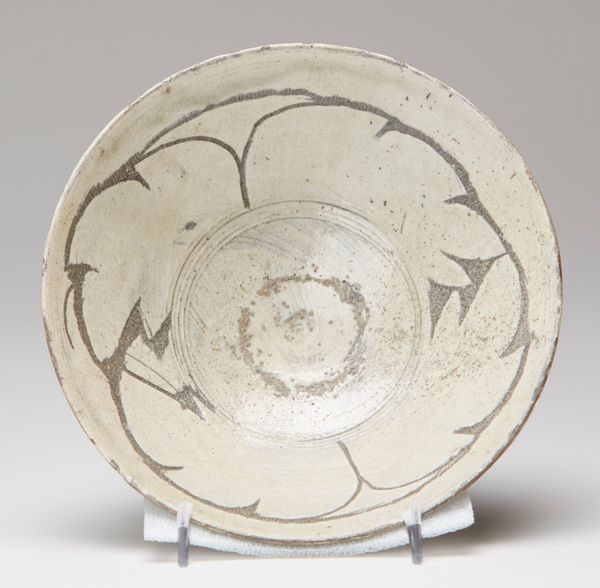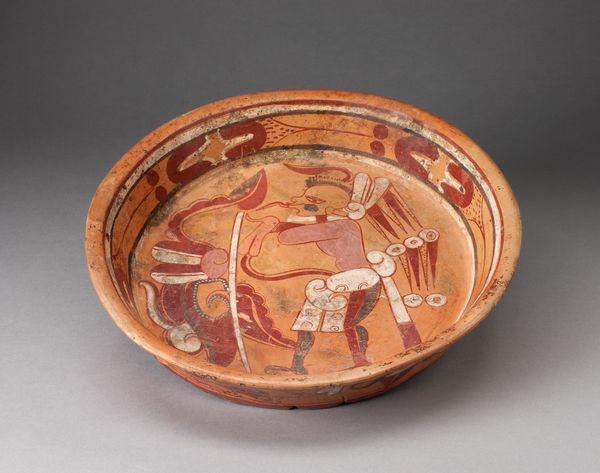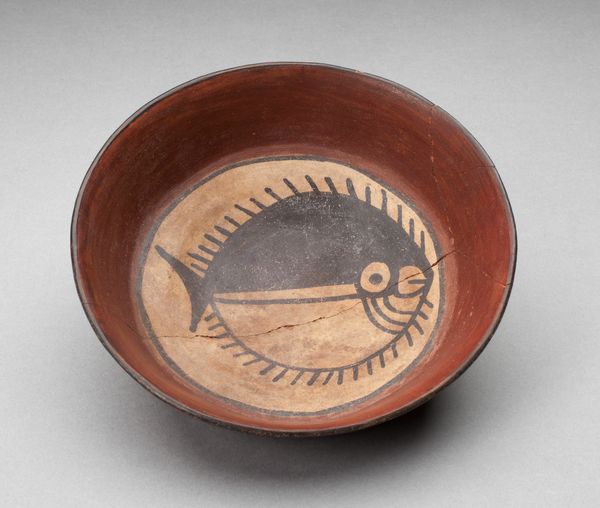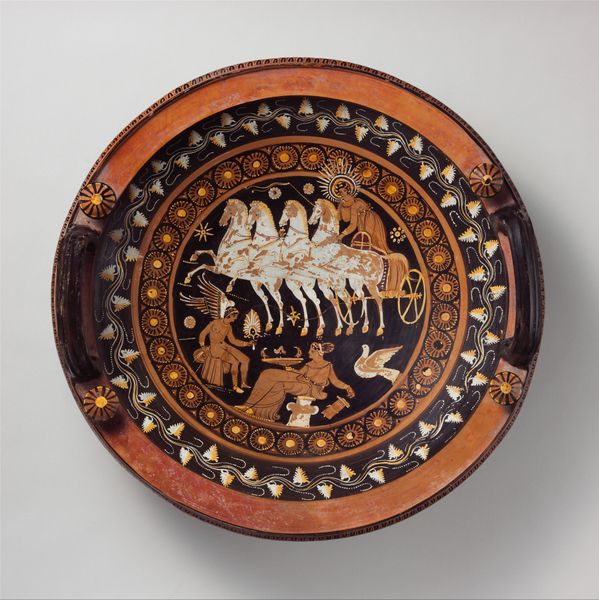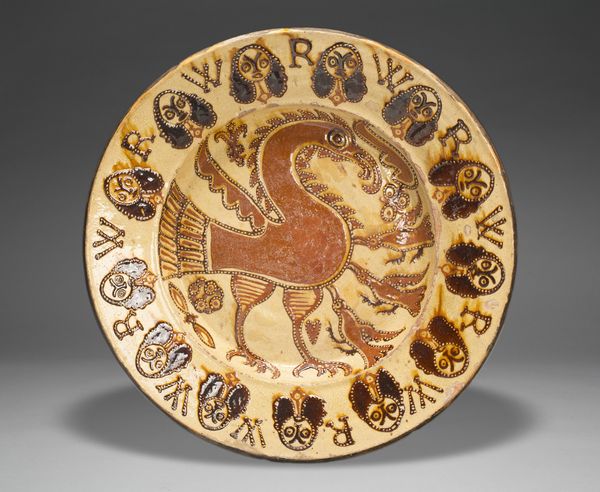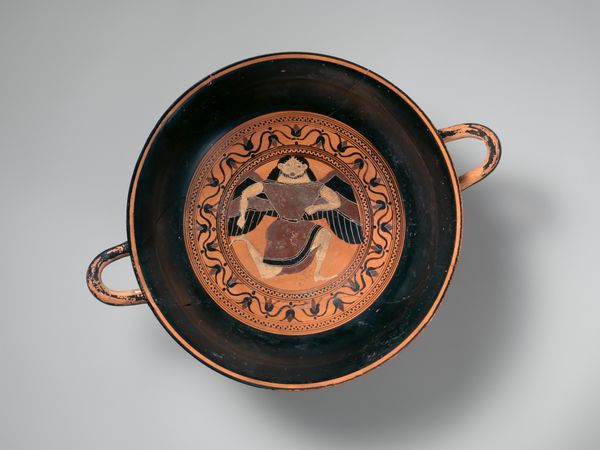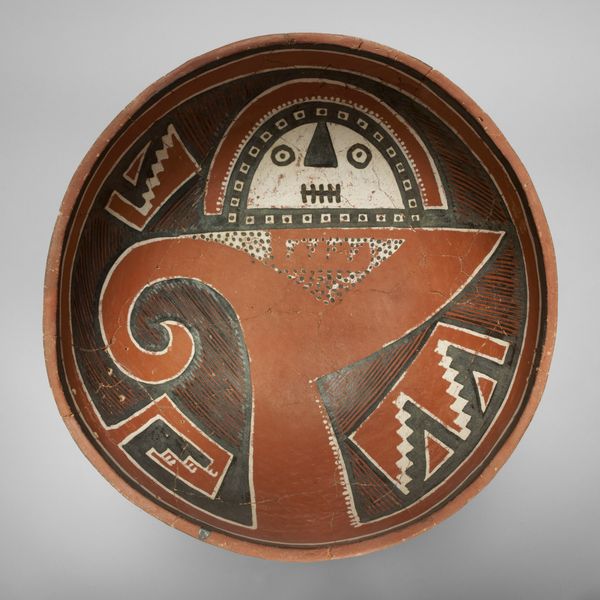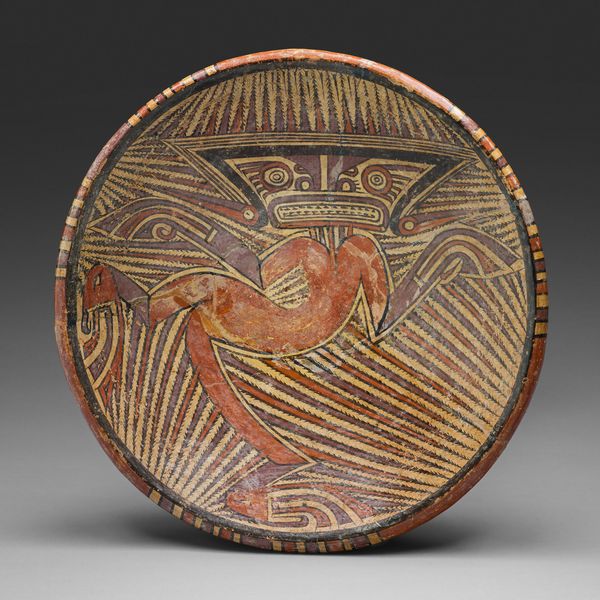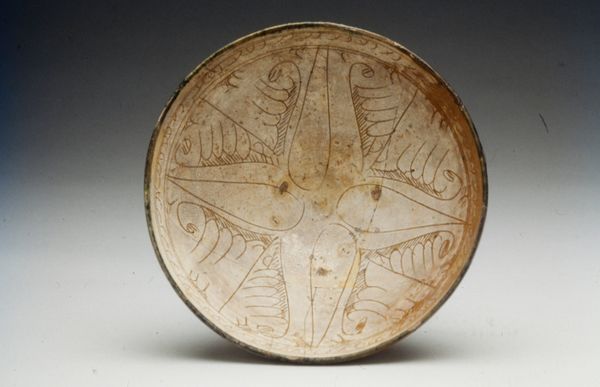
ceramic, earthenware
#
pottery
#
ceramic
#
figuration
#
earthenware
#
geometric
#
ceramic
#
earthenware
#
indigenous-americas
Dimensions: 3 1/4 x 7 1/2 in. (8.26 x 19.05 cm)
Copyright: Public Domain
Curator: Let’s take a look at this Mimbres bowl, earthenware, circa 1000 to 1150, at the Minneapolis Institute of Art. Editor: My first impression is… storytelling. A playful, slightly mystical story rendered in simple, earthy tones. Curator: Yes, the narrative element is central to Mimbres pottery. Note the limited palette—reddish-brown on a cream ground—characteristic of their ceramic work. The geometric banding around the rim draws the eye inward to the central figurative motifs. Editor: The two creatures, almost stylized dog-like figures, evoke a world of myth and ritual. It’s interesting how the top figure stands with a distinct dynamism, while the other one is almost entirely subsumed in a curved line, appearing prone. Curator: These figural depictions—often animals or human-animal hybrids—are indeed fascinating. The bold, curvilinear brushstrokes are remarkably confident given the medium, creating positive and negative space which generate balance. Do consider that the designs are believed to reflect cosmological beliefs. Editor: And there’s that small drilled hole… suggesting its possible use in burial rituals? Letting the spirit escape, perhaps? Or, cynically speaking, just a sign of wear and tear from repeated use. Curator: The intentional “killing” of the vessel through puncturing is a valid interpretation tied to ceremonial contexts. Functionally speaking, yes, it could just as easily be a byproduct of usage, but scholars lean towards the ritual aspect given consistent patterns. It's the formal treatment that gives it deeper significance. Editor: For me, this piece radiates an otherworldly energy, like a glimpse into a hidden reality. The artists seem to be playing with symbols and motifs they have pulled directly from their collective consciousness. The imperfection just makes it all the more charming! Curator: Indeed. Studying this bowl is to decode structure and signs through surface materiality and color composition—but is also a study of symbolism from a time very remote to ours. A truly integrated totality, wouldn't you agree?
Comments
minneapolisinstituteofart almost 2 years ago
⋮
The Mimbres, a group of people within the Mogollon tradition, lived in southwestern New Mexico from A.D. 1000 to 1150. The majority of Mimbres ceramics are simple, white bowls with black painted, geometric and pictorial designs. Some Mimbres bowls, however, have red designs, as in this example. The color of the designs depended upon how the bowls were fired. A kiln with freely circulating air would cause the iron ore in the paint to oxidize, rendering a red color, but if the oxygen supply was reduced, the paint would fire black. The Mimbres depicted a wide range of creatures, including fish, frogs, rabbits, turtles, bats, birds and humans. Bowls were not only utilitarian but were also ceremonial and accompanied the deceased. When buried with the dead, a hole was punched through the center, and the bowl was then placed over the face.
Join the conversation
Join millions of artists and users on Artera today and experience the ultimate creative platform.
